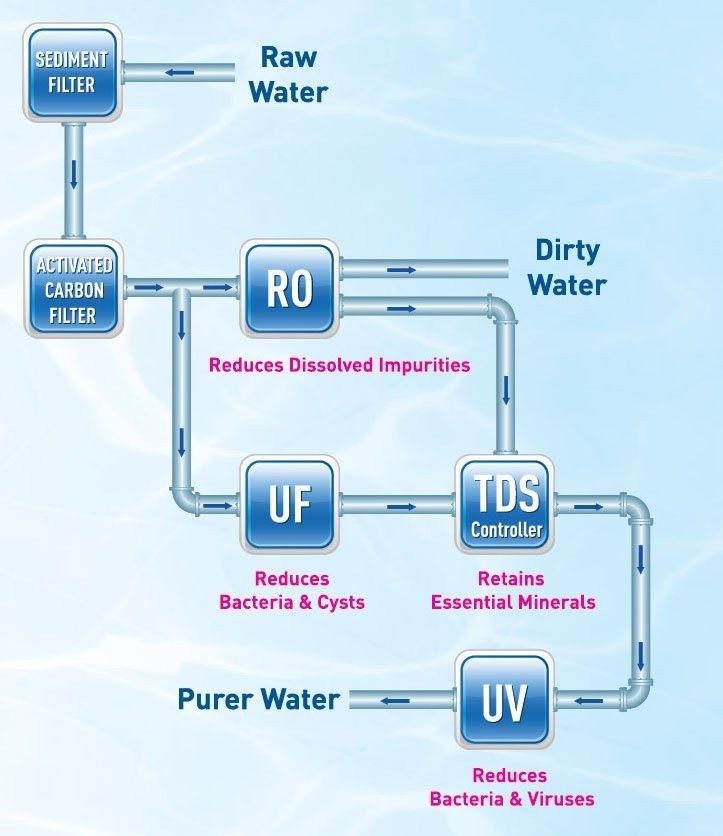Many people worry about pathogens such as germs and bacteria that are present in drinking water. These can cause a number of water-borne diseases. In addition, water may also contain harmful dissolved chemical impurities which can lead to harrowing disorders, and even early death. It is always better to be safe than sorry, and that is why you need to install a good water purifier that can treat not only the pathogens, but also dissolved and suspended impurities. For being able to choose the right water purifier, you need to carefully compare the different technologies available.

How do these water purification technologies work?
RO Water Purifier
RO systems can remove germs and viruses as well as dissolved salts and metals. These systems generally have a pre-filtration stage enabling them to work with dirty water. Ro water purifers also require electricity to boost the pressure of tap water.
UV Water Purifier
UV purifiers can kill any present germs and bacteria, but can’t remove their remains. Though these systems can work with normal tap water pressure, they cannot remove dissolved salts, and can only work with clear water.
UF Water Purifier
UF water purifiers work with normal pressure tap water. UF purifiers can block and remove germs but not dissolved salts and can also work with muddy water.
What makes each of these technologies favorable?

RO
RO systems successfully remove dissolved and suspended impurities, as well as pathogens from the water; but might also remove essential minerals that are present in the water naturally. This may make the water tasteless and lead to mineral deficiencies in the body. The problem, however, can be fixed by choosing a water purifier that also has a TDS controller, which restores these essential minerals in the water.
UV
For a UV purifier to work, the light has to be able to travel through the water, which means that only a certain quality of water can be successfully cleaned in a UV purifier. Also, it is important to ensure that the UV bulb is free of algae or dirt, which can build up after a while, if the UV light has been kept off for some time.
UF
Like RO, the UF is also a membrane, with holes that are so small that they can filter out even viruses. This is also good for filtering out suspended impurities from the water, but won’t work on dissolved harmful chemicals.
Buying the Right Water Purifier in India


